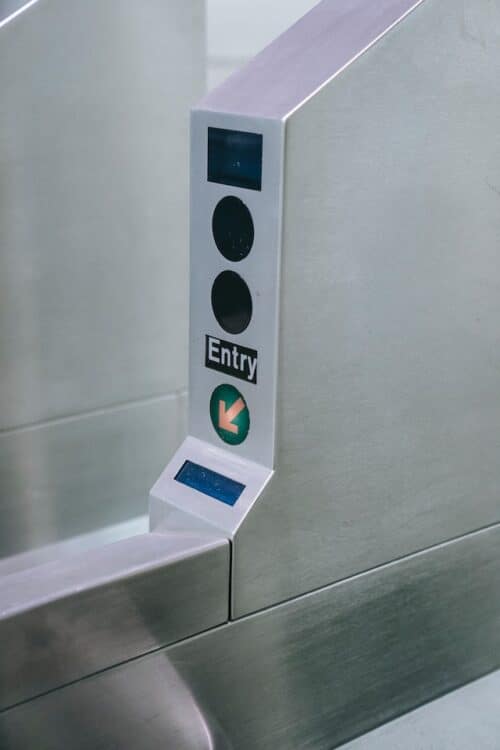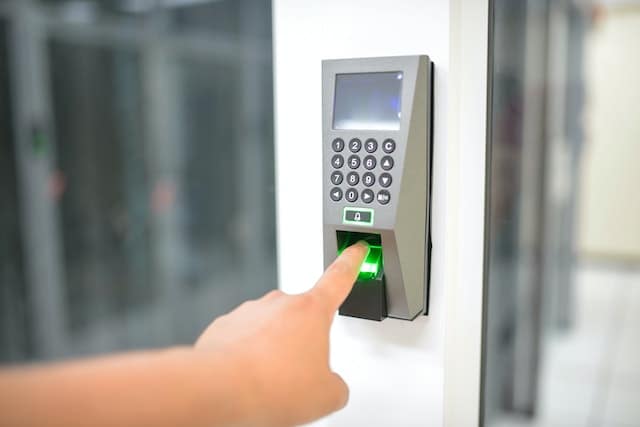In today’s rapidly evolving business landscape, ensuring the safety and security of employees is just as important as the safety of sensitive information. And one crucial aspect of safeguarding your workplace is the implementation of a controlled office access system. By granting access to authorized personnel only, businesses can significantly reduce the risks associated with unauthorized entry, theft, and data breaches.
In this blog post, we will delve into the four key benefits of employing a controlled office access system, plus how to implement office access control.
What does controlling office access mean?
Controlling office access is a method of using technology to secure office buildings. It also means regulating and managing who can enter specific areas within an office or workplace.
What does office access control do?
Office access control systems keep employees secure by controlling entry and exit points via credentialed access. This can be achieved by implementing security measures and credentials to restrict access to authorized personnel while preventing unauthorized individuals from gaining entry.
Examples of access credentials include:
- PINs
- Key cards
- Key fobs
- Video intercoms
- Biometrics
- Smartphone apps
The primary use of office access control is to secure people, assets, and information.
4 Benefits of controlled office access
Some companies opt out of robust access control systems for their offices because they don’t want to factor in the budget. But the truth is, there are many affordable commercial access control systems to choose from.
Moreover, the benefits that come with having access control for your office building can actually make any cost associated with it worthwhile.
1. Making access easier for employees
With an access control system for offices, you make it easier and less complicated for employees to access the building. For example, video intercoms and keypads, such as the smart video intercom and keypad from ButterflyMX, make it simple for employees and managers to come and go from the building at will while also securing access from non-credentialed visitors.
Moreover, many systems allow managers to quickly view time-stamped logs to verify who has entered the premises, at what time, and for how long.

2. Reducing traditional credentials
Smart technology, such as smart locks and video intercoms, can eliminate the need for traditional keys, cards, and fobs. These types of credentials are easy to lose and costly to replace.
However, when you employ the use of an access control system, the key cards and fobs are still usable options for those who want them.
3. Increasing security
The primary benefit of office access control is the heightened security it provides. By limiting access to authorized personnel only, you significantly reduce the risk of unauthorized entry, theft, and potential security breaches. This ensures that valuable assets, sensitive information, and confidential data are protected.
4. Meeting compliance needs
Many types of office buildings, specifically those that deal in data security, are required to meet certain regulations in order to be compliant. Having a state-of-the-art security unit is an easy way to meet these industry security standards.
Other types of buildings that benefit from controlled access
Buildings that greatly benefit from access control systems include:
- Healthcare buildings. Healthcare buildings benefit from controlling who gains access to the building. The reason is that they contain patient information, costly equipment, and personnel that should be safeguarded. Furthermore, access control can easily help healthcare buildings meet HIPAA security regulations.
- Government buildings. Many government buildings contain sensitive information that must be protected. With the use of an access control system, it’s easy to monitor who accesses these buildings, when, and for how long.
- Retail buildings. Retail businesses can utilize an access control system for managing manager and staff access to the building. Furthermore, managers can monitor employee databases by granting or revoking access at any time.
Three types of access control systems for office buildings
The top three types of access control include:
- Keypads and card readers. For some, remembering a PIN or keeping a keycard on their person feels more reliable. A gated access system with a keypad or card reader affords efficiency and security.
- Vehicle readers. Many office buildings use parking garages, and to avoid PIN issues, vehicle readers can be installed at facility gates. These readers will open the gate as the guest drives up and close it right after.
- Video intercoms. Video intercoms are perfect solutions for entrance permissions. They make it simple for visitors to request access via a two-way call. Plus, managers can access photos and time-stamped logs to manage visitors.










Leave a Reply